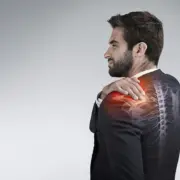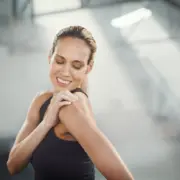Brachial Plexus Injury
The brachial plexus is the network of nerves that sends signals from the spinal cord to the shoulder, arm, and hand. What commonly happens is the patient has no idea they have a severe injury to the brachial plexus. They know their hand or arm is not working properly, but they often don’t know why, or that there may be a way to treat the problem. It’s important to consult with a trained and experienced orthopedics specialist right away. The place you’re going to get not just the most, but the best help is at Advanced Orthopedics in Denver, Parker, or Aurora, Colorado.
OVERVIEW
A brachial plexus injury occurs when the network of nerves mentioned above is stretched, compressed, or in the most serious cases, ripped apart or torn away from the spinal cord. It’s possible to injure the brachial plexus without knowing it, but the consequences can include temporary numbness of the arm, pain, and loss of sensation. Minor brachial plexus injuries, known as stingers or burners are common in contact sports such as football. Other conditions, such as inflammation or tumors may affect the brachial plexus. The most severe injuries usually result from automobile or motorcycle accidents.
ABOUT THE BRACHIAL PLEXUS
The brachial plexus is formed as the nerves to the arm, hand, and fingers pass from the spinal cord, between the bones of the neck (vertebrae), and go into the arm. Along the side of the neck, near the shoulder, these nerves merge. From there, they branch out to form a “highway system,” or “plexus,” of nerves. This system of nerves then travels behind the collarbone (clavicle) and spreads out into the arm. The nerves that go to the shoulder lie higher in the neck than those that travel to the hand and fingers. Nerves that provide feeling to the hand and fingers lie lower in the neck and deep in the armpit. The five nerves are:
- Musculocutaneous nerve– flexes muscles in the upper arm, at both the shoulder and elbow
- Axillary nerve– helps the shoulder rotate and enables the arm to lift away from the body
- Medial nerve– enables movement in the forearm and parts of the hand.
- Radial nerve– controls various muscles in the upper arm, elbow, forearm, and hand
- Ulnar nerve– allows for fine motor control of the finger
WHAT IS A BRACHIAL PLEXUS INJURY?
Brachial plexus injuries are categorized according to how the nerves are damaged and the severity of the injury.
Read more about Brachial Plexus Injuries on our new Colorado Springs Orthopedic News Site – Colorado Springs Orthopedic News. Schedule an appointment with a shoulder specialist today.







